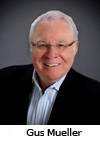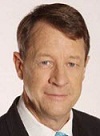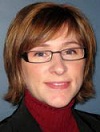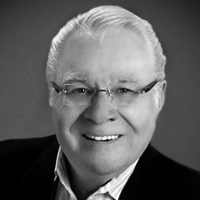 In this month's 20Q, our Question Man travelled to eastern Tennessee to talk to our guest author Earl Johnson. Their conversation resulted in a very informative comparison of the two hearing aid prescriptive fitting methods that we use today: the NAL-NL2 from the National Acoustic Laboratories and the Desired Sensation Level (DSL) from the University of Western Ontario. There is quite a history surrounding both of these methods.
In this month's 20Q, our Question Man travelled to eastern Tennessee to talk to our guest author Earl Johnson. Their conversation resulted in a very informative comparison of the two hearing aid prescriptive fitting methods that we use today: the NAL-NL2 from the National Acoustic Laboratories and the Desired Sensation Level (DSL) from the University of Western Ontario. There is quite a history surrounding both of these methods.
The modern era of hearing aid prescriptive fitting was launched by an article by Denis Byrne and Will Tonnison in 1976. While not officially called the "NAL method," it soon became known as that, as this was the origin of the research (Denis was the "Audiologist-In-Charge" of research at the NAL). Not too many years later, we started seeing this fellow "Harvey Dillon's" name appear on publications with Denis, and in 1986 Byrne and Dillon published the "revised" NAL prescriptive method (NAL-R). As it became necessary to have a prescriptive method for non-linear hearing aids, the research of Denis and Harvey led to NAL-NL1, and over the past 10 years, Dr. Dillon has developed yet another new and improved NAL version, the NL2.
The same year that the Byrne and Tonnison paper was published, Richard Seewald enrolled in the Ph.D. program at the University of Conneticut, where he worked with Mark Ross and began the development of the original DSL method. The results of their work were published in 1985. The math for calculating his DSL prescriptive output was a little challenging for the average clinician (the process was kindly titled "DSL-By-Hand"), and Richard immediately went to work using his Sinclair ZX81 computer to make the process more automatic. As a result, the DSL was distributed as a software system in 1991, making DSL v3.0 the first computerized fitting method for children. A few years later, when WDRC fittings were becoming standard, we saw the DSL[i/o] (DSLv4.1a) revision. It was also about this time that we started to see Susan Scollie's name associated with publications from "DSL-Land." Through the work of Dr. Scollie and colleagues, DSLv5.0 was introduced in 2005.
It's a special day when both Harvey Dillon and Susan Scollie join us here at 20Q. I know that you'll enjoy reading their comments and unique insights about their prescriptive fitting methods
Gus Mueller, Ph.D.
Contributing Editor
April 2012 From Harvey Dillon
From Harvey Dillon
I enjoyed reading Earl's 20Q article, and I don't have too much to add, especially on the calculation of how many gazillions of ways a modern hearing aid can be adjusted.
As Earl says (reply to Question 8), procedures based on loudness normalization, especially those based on scaling the loudness of individual patients, have not passed the test of time. A complication he does not mention is that normalizing loudness one frequency at a time does not ensure that the loudness of broadband sounds like speech is also normalized. Regarding the tendency of the NAL-NL2 prescription to equalize loudness across frequency as a means of maximizing intelligibility, exceptions to this do occur. If hearing loss is much worse in one frequency region than in others, then NAL-NL2 will not attempt to give that frequency region the same loudness as other regions, as the potential contribution to intelligibility from that region will be less, so equal loudness represents wasted loudness.
The impact of the number of channels on the prescription often concerns people (Question 14). There is no reason why speech at the ear canal should be any different if on its way through the hearing aid it has been broken up into 1, 10, or 100 channels, (as long as the different channels have all been put back together again). However, if the gain of a hearing aid is measured with pure tones, all the power of the signal is concentrated in one narrow frequency channel, so multi-channel hearing aids act as though the pure tone is part of a much more intense broadband sound, and reduce the gain accordingly. Consequently, the gain for pure-tone test signals, but not for broadband test signals, should decrease as the number of channels increase. This characteristic occurs in the NAL-NL1 and NL2 prescription formulae.
Finally, while I recognize that Earl's article was focused on the adult population, I would like to comment that we are following 470 children from the time they get their first hearing aid. They are now from 4 to 9 years of age. Half of these children were randomly assigned to receive the DSL prescription and half the NAL prescription. Although their language scores are significantly affected by a range of predictive factors, the hearing aid prescription used is not amongst these. Given that there are still some differences between the NAL and DSL prescriptions, this result means that quite a number of the adjustment possibilities of the hearing aid that Earl calculated actually are equally effective for the hearing aid wearer, even if they don't sound exactly the same as each other. What seems to be a reasonable conclusion is that using an evidence-based prescription formula is important; whether it is NAL-NL2 or DSLv5.0 seems to be much less important. From Susan Scollie
From Susan Scollie
My hat is off to Earl Johnson for this great overview of prescriptive methods. I really loved Question 4, because it brought me back to the days of developing DSL5. Even though we had a lot of people on the team, it still felt like a very big job - I guess we didn't know we had 1430 choices for each target!
Our group certainly agrees with Earl that fitting and verification to any well-developed, well-validated prescriptive method is more likely to result in positive patient outcomes than not doing so. This consideration is of great importance for those hearing aid users who cannot advocate for their own preferences, including infants and young children.
It's been interesting to see the prescriptions move closer and closer to one another over the years. Yet, as shown here, the differences for some hearing aid users can be considerable: a high-frequency difference of 5 to 20 dB in prescribed high frequency gain can really change the audible bandwidth available from the hearing aid, especially for soft speech. One recent study by Todd Rickets and colleagues tells us that 2/3 of adults prefer a wide aided bandwidth, but 1/3 don't.
So what should we do? Perhaps we should consider the individual. Individual variation in speech recognition performance with audibility is significant: some listeners with severe sloping losses do very well with audible speech while others don't, even in the studies that underlie the original NAL-NL1 desensitization corrections. Our conclusions about which prescription is best may change if we look at the "average patient", versus if we realize that individual patients differ. Some adults do better with a broad audible bandwidth.
Children tend to benefit from (and prefer) more audibility and a broader bandwidth. Hearing aid prescriptions vary in the bandwidth they deliver. SII-based analyses of whether bandwidth matters may miss the true benefits that a broad bandwidth has to offer: a blunt tool perhaps? (Samantha Gustafson and Andrea Pittman published a wonderful study of this problem in IJA last year).
For these reasons, the DSL5 target starts with the assumption that audibility may be helpful, and we scale the listening level a little lower for adults to better approximate their preferences. Maybe a back-to-basics approach includes revisiting how we use one or more prescriptions across patients to better meet each of their needs.
Read Dr. Johnson's 20Q article here.


